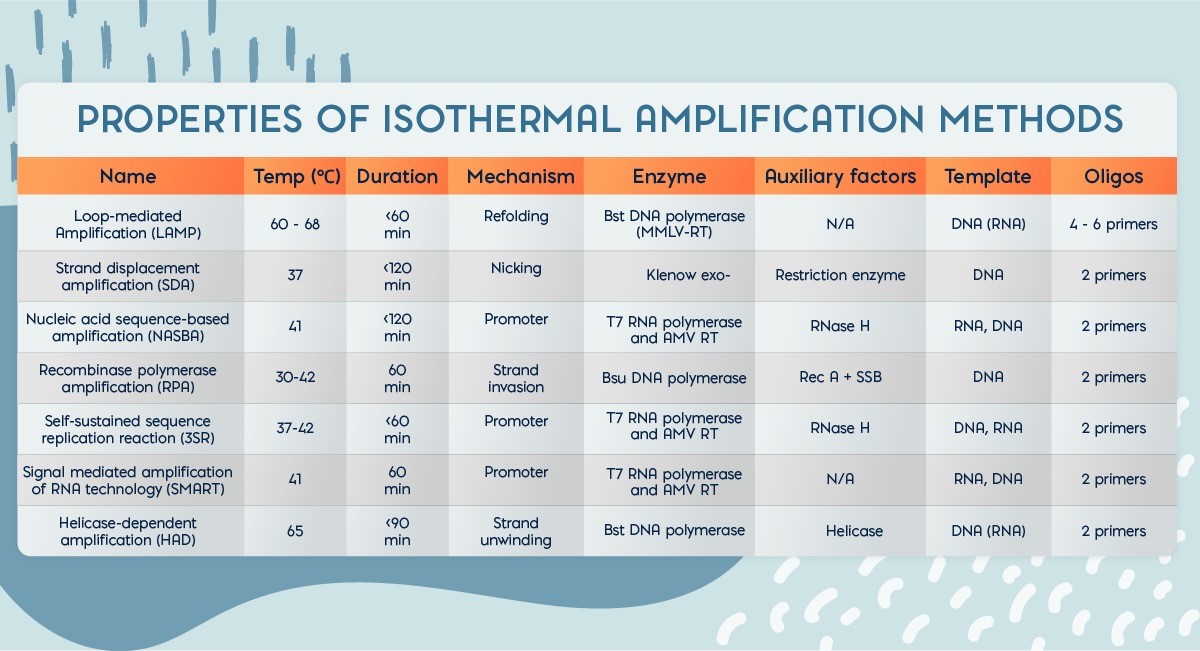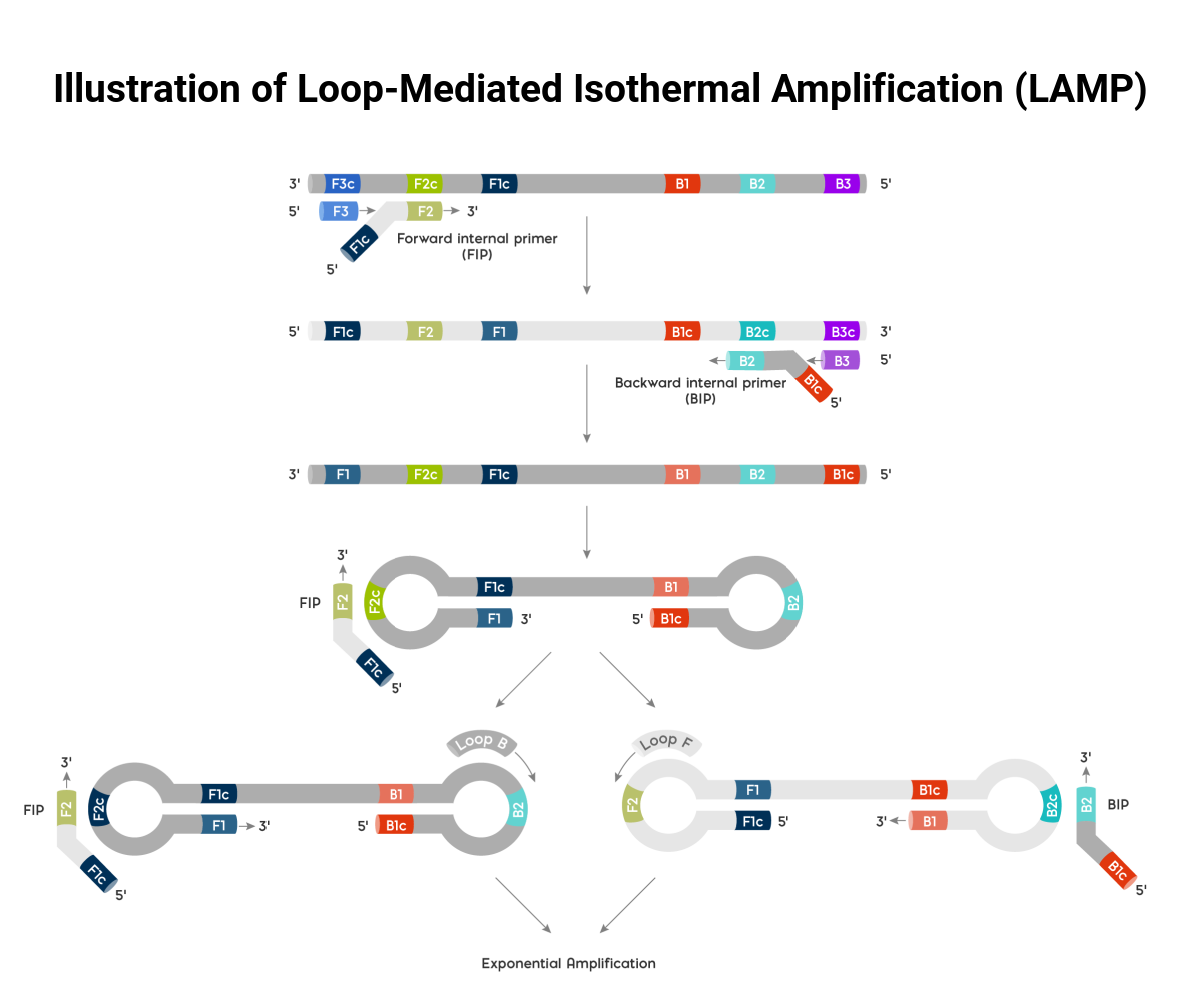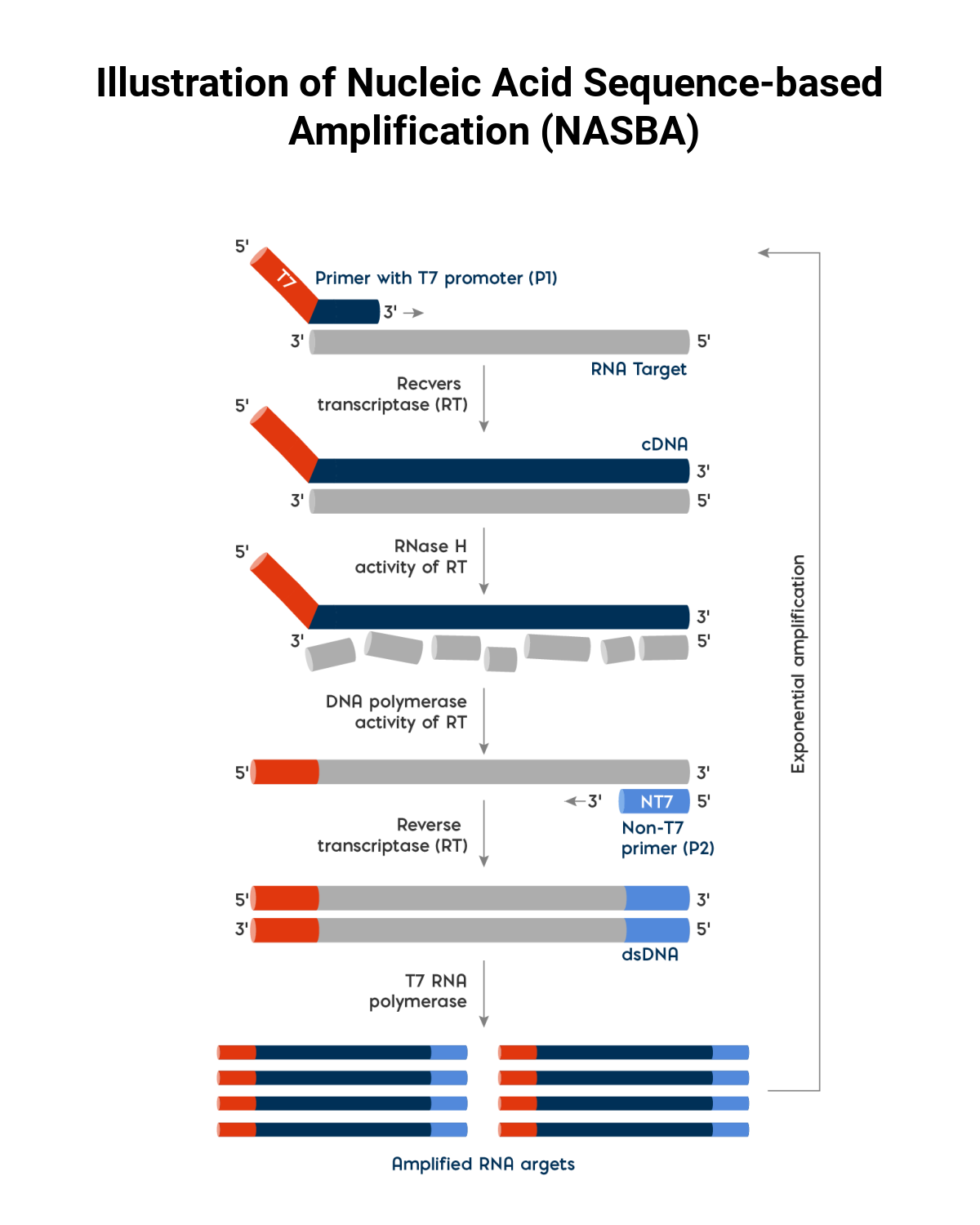In the intricate realm of healthcare, where answers often hide in the tiniest of details, molecular diagnostics, especially point-of-care diagnostics, have emerged as a key to improving healthcare delivery. In particular, isothermal amplification techniques have gained popularity for their sensitivity and specificity which is on par with PCR.
What is isothermal amplification?
DNA/RNA amplification is a fundamental technique used in molecular diagnostics for its ability to detect and amplify specific DNA sequences. One type of DNA amplification, called isothermal amplification enables rapid and consistent amplification of DNA or RNA under a single temperature condition, eliminating the need for thermal cycling which requires sophisticated equipment. The concept of isothermal amplification started in the early 1990s with the self-sustained sequence replication (3SR)1 technique, and was quickly followed by nucleic acid sequence-based amplification (NASBA)3, strand displacement amplification (SDA)3, transcription-mediated amplification (TMA)4 and loop-mediated isothermal amplification (LAMP)5.
Properties of Isothermal Amplification Methods

The versatility of isothermal amplification lends itself to a wide range of applications including point-of-care (POC) testing for diseases, environmental monitoring, and food safety. Several types of isothermal amplification methods exist, each with unique mechanisms and characteristics, and selecting the best method depends on a number of factors such as the final application.
Types of Isothermal Amplification
LAMP
LAMP is a widely used isothermal amplification technique that employs a DNA polymerase and a set of four to six primers that specifically recognize multiple regions within the target DNA sequence to create stem-loop DNA structures. These structures serve as templates for continuous DNA synthesis, enabling rapid and exponential amplification. As amplification progresses, magnesium pyrophosphate starts to accumulate as a by-product and causes turbidity or the appearance of a white precipitate which can be observed by the naked eye. LAMP is highly regarded due to its high specificity, rapid amplification (within 30 minutes to an hour), and high resistance to common inhibitors found in complex samples including blood, saliva, and environmental samples.

NASBA
NASBA is a type of isothermal nucleic acid amplification technique that focuses on RNA amplification. This technique is particularly useful for applications such as viral load quantification, gene expression analysis, and the detection of RNA-based pathogens. NASBA utilizes two primers, known as the “sense” and “antisense” primers, which are designed to hybridize to the target RNA sequence, and through reverse transcriptase, generate a complementary strand of DNA (cDNA) which then serves as a template to synthesize multiple RNA copies. The new RNA strand and the cDNA template separate and re-join through denaturation and reannealing. This process is repeated in a cycle of reverse transcription (to create more cDNA), RNA synthesis, and exponential RNA amplification. NASBA offers benefits such as rapid amplification, high sensitivity and specificity and can provide quantitative data about the initial RNA concentration, making it valuable for applications such as viral load quantification in clinical virology.

Why is isothermal amplification so important in POC?
In point-of-care settings, healthcare providers must make decisions quickly, and the more sensitive, accurate and rapid the diagnostic assay, the swifter they can assess a patient’s condition, determine the most appropriate course of action, and initiate treatment. Traditionally molecular diagnostics based on PCR are performed within a laboratory setting as the assays require trained personnel, specialized equipment and controlled environments to reduce the potential for contamination. The development of isothermal amplification methods such as LAMP and NASBA have expanded the possibilities for performing molecular diagnostics outside the traditional lab setting to include clinics, field sites, and even homes, bringing molecular diagnostics closer to the point of patient care.
Meridian Isothermal Amplification Solutions
As isothermal amplification grows in popularity, Meridian is positioned to be a leader in reagent innovation for both LAMP and NASBA applications. For LAMP, Meridian offers Specimen-specific™ master mixes for blood, saliva, and stool that are lyophilization-ready, containing all the excipients necessary for freeze-drying. For NASBA, Meridian offers the complete enzyme cocktail including Glycerol-free T7 RNA Polymerase, RNase H and Avian Myeloblastosis Reverse Transcriptase (AMV-RT). To learn more about isothermal technologies, listen to our webinar “Is low-cost, sensitive, single-temperature amplification the future of molecular point-of-care testing?”
References
- Guatelli J.C., et al. 1990. Isothermal, in vitro amplification of nucleic acids by a multienzyme reaction modeled after retroviral replication. PNAS. 87(5): 1874–1878.
- Compton J. 1991. Nucleic acid sequence-based amplification. Nature. 350(6313): 91–92.
- Walker G.T., et al. 1992. Isothermal in vitro amplification of DNA by a restriction enzyme/DNA polymerase system. PNAS. 89(1): 392–396.
- Kacian D.L. & Fultz T.J. 1995. Nucleic acid sequence amplification methods. Biotechnol Adv. 3(13): 569.
- Notomi T., et al. 2000. Loop-mediated isothermal amplification of DNA. NAR. 28(12): E63.
Isothermal Amplification Mixes & Enzymes | Meridian Bioscience - Torres C., et al. 2011. LAVA: an open-source approach to designing LAMP (loop-mediated isothermal amplification) DNA signatures. BMC Bioinformatics. 12: 240. doi:10.1186/1471-2105-12-240. PMC 3213686. PMID 21679460.